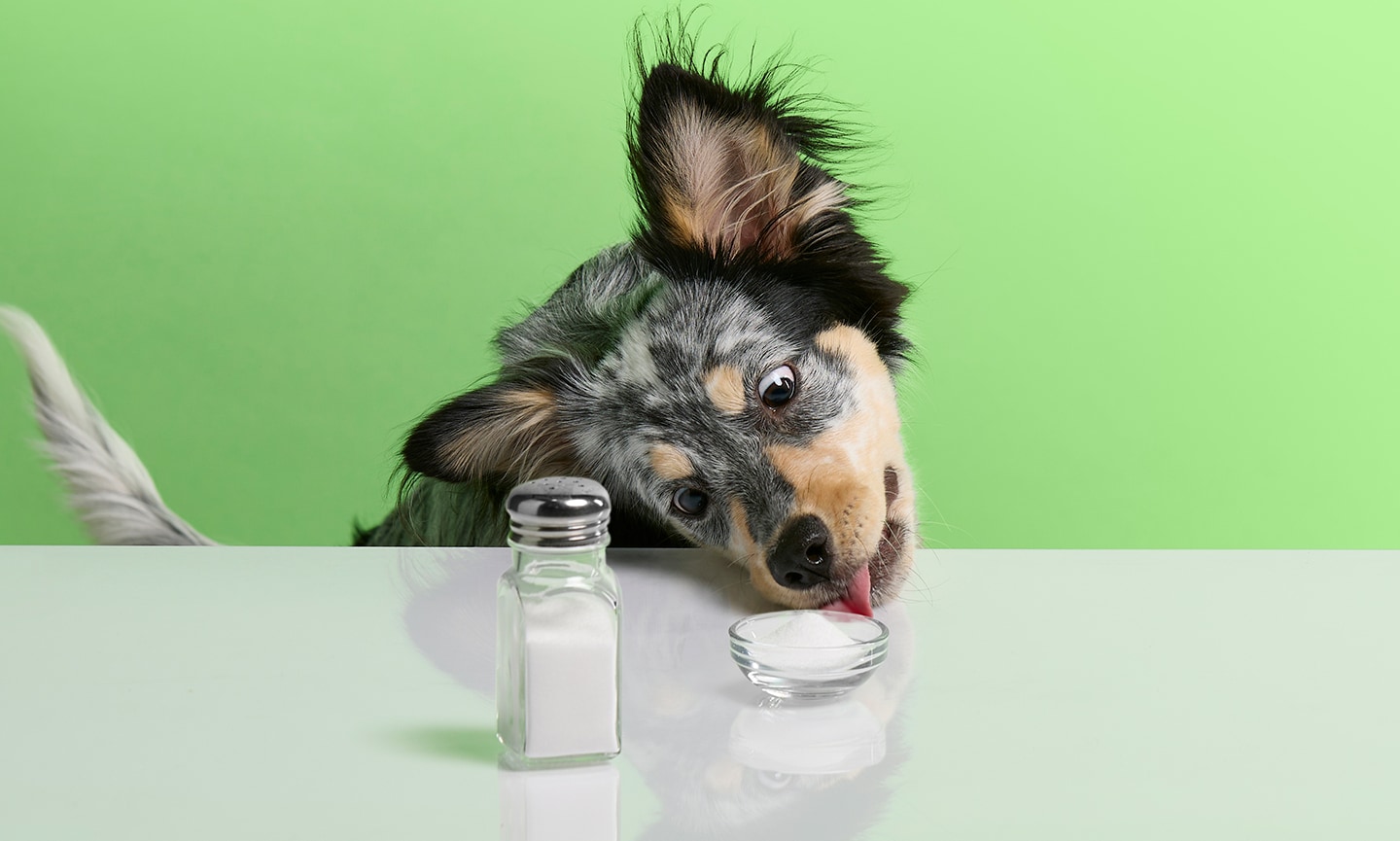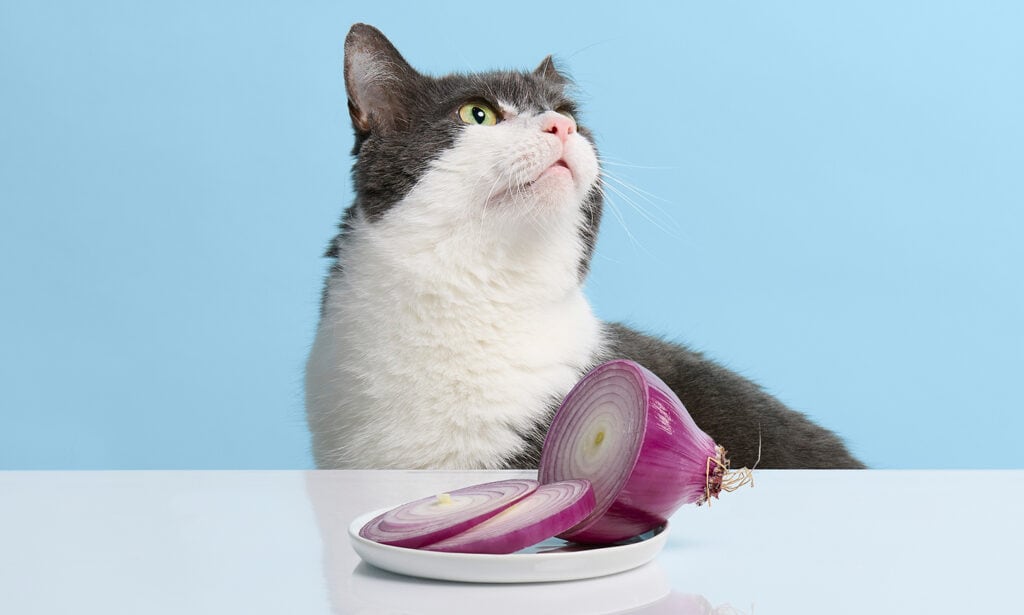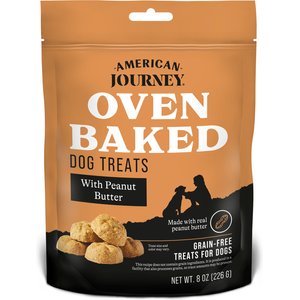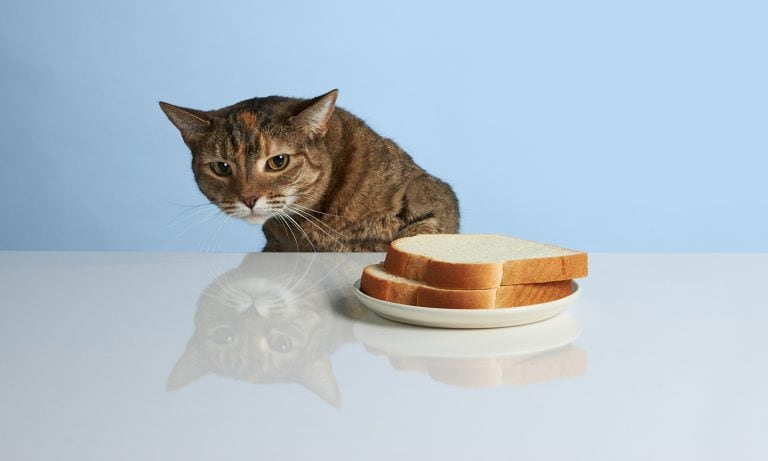Wouldn’t it be great if we could share all of our favorite snacks and meals with our pets? Unfortunately, there are a lot of human foods that are off-limits for dogs and cats.
Some human foods can present a danger under some circumstances, and other foods are straight-up toxic, meaning they can cause serious health issues or even death.
We spoke with vet experts to get the scoop on 23 toxic foods for pets, 10 potentially dangerous foods for pets, what you should do if your pet ingests a toxic substance and more.
Toxic Foods for Pets
Click on a food to learn more.
1Alcohol
Alcohol is highly toxic to all pets, including cats and dogs. Alcohol can lurk in places beyond the obvious beer or cocktail: Some desserts, like rum cake and tiramisu, are flavored with alcohol, for example. Fermented fruit, including fermented apples, also can contain it.
Alcohol is dangerous for your pets because it can cause dehydration, low blood sugar, electrolyte imbalances and kidney and liver issues.
Symptoms of alcohol poisoning in pets:
- Vomiting
- Diarrhea
- Dehydration
- Electrolyte abnormalities
- Tremors
- Abnormal blood acidity
- Decreased coordination
- CNS depression
- Difficulty breathing
- Liver and kidney problems
- Low blood sugar
- Coma
- Death
2Apple Seeds
Apple seeds are problematic for dogs and cats because they contain cyanide, which is toxic to pets (as it is to humans). However, to suffer ill health effects, your pet would need to ingest a very large quantity of apple seeds.
As such, it’s not worth taking apples off the “occasional healthy treat” list. Just be certain to remove all seeds so your four-legged friend isn’t repeatedly ingesting low levels of cyanide over a span of time.
Signs of cyanide toxicity:
If your pet were to consume a large amount of cyanide, they could die very quickly. However, if they ingest smaller amounts, the following may occur:
- Bright red gums
- Rapid or difficulty breathing
- Excessive salivation
- Convulsions
- Paralysis
3Apricot Stems, Leaves and Pits
While the apricot itself is a great option for an occasional treat, the stems, leaves and pits contain cyanide. If you opt to feed apricot to your pup or cat, take care to throw away the stems, leaves and pits.
The pits are especially dangerous because once broken, they release much greater quantities of cyanide than is contained in the stems and leaves. Some pets may see an apricot pit as a great chew toy, so it’s imperative to ensure they don’t have access.
4Avocados
All parts of avocados–the leaves, fruit, seeds, pit and skin–contain persin, which is a fungicidal toxin. Percin is highly toxic to horses, cattle, goats and birds and can cause severe health issues or even death.
While avocado isn’t as dangerous for dogs and cats in very small quantities, it still poses a risk and is best avoided altogether.
Signs your pet may have ingested persin:
- Vomiting
- Diarrhea
- Upset stomach
- Loss of appetite
- Difficulty breathing
- Abnormal fluid accumulation in the chest
5Bones
Bones aren’t technically toxic, but we’re including them because they’re extremely dangerous. You should never offer your pet the bones from meat you purchase.
Bones from human foods pose a choking hazard, can cause constipation or even a blockage and can be contaminated with bacteria, such as E. coli, Salmonella and Listeria, that can lead to food poisoning.
Note that while you should avoid giving any bones whatsoever to your pets, cooked bones are especially risky. Cooking bones causes them to become brittle, which makes them more likely to splinter. This can result in severe digestive tract injuries.
Signs your pet could have an intestinal blockage/bowel obstruction:
- Weakness
- Loss of appetite
- Dehydration
- Bloating
- Diarrhea
- Nausea
- Vomiting
- Straining when pooping or an inability to poop at all
- Painful reaction to having their abdomen touched
- Restlessness
- Whining
6Caffeine
Caffeine is toxic to dogs and cats. When a pet consumes enough caffeine to harm them, caffeine toxicity is usually seen within 30 to 60 minutes. While we all know coffee, tea and soda contain caffeine, other common food items, such as candy and chocolate, can also have this chemical as an ingredient.
Around 9 mg of caffeine per pound of body weight leads to toxicity in dogs; for cats, it takes only 3-4 mg of caffeine per pound of body weight.
Signs of caffeine toxicity:
- Vomiting
- Diarrhea
- Panting
- Excessive thirst and urination
- Hyperactivity
- Abnormal heart rhythm
- Tremors
- Seizures
- Death
7Cherry Stems, Leaves, Seeds and Pits
Every part of a cherry other than the fruit flesh itself contains cyanide, which, as we’ve already discussed, is highly toxic to dogs and cats. For this reason, most pet parents skip feeding their pets cherries altogether.
If you do decide to give your furry BFF a small amount of the fruit flesh, be careful not to drop any pits on the floor, where your pet could find them. Also take caution to prevent the stems, seeds or leaves from becoming mixed in with the cherry pieces.
8Chocolate
White chocolate, dark chocolate, milk chocolate… This sweet treat is practically a food group for some of us humans. However, for dogs and cats, chocolate is toxic. It contains caffeine, which we know is dangerous, plus theobromine, another chemical that our pets cannot metabolize well.
Both caffeine and theobromine belong to the methylxanthine family. This is important because the amount of methylxanthine varies between the different types of chocolates, and the amount of methylxanthine your pet consumes matters.
The level of toxicity depends on the type of chocolate. Dark chocolate has more caffeine and therefore poses a greater risk of toxicity than milk chocolate. Although white chocolate contains trace amounts of theobromine, it’s generally considered less toxic.
In the unfortunate event that your pet eats chocolate, you can use the dog chocolate toxicity calculator or cat chocolate toxicity calculator to gauge the potential harm. (Note that regardless of the calculations, it is still advisable to contact your vet if your pet consumes chocolate.)
Signs of chocolate toxicity:
- Diarrhea
- Increased thirst
- Excessive urination
- Panting
- Restlessness
- Elevated heart rate
- Muscle tremors
- Seizures
9Garlic
It’s a staple for adding flavor to human food, but garlic is on the no-go list for cats and dogs. It contains thiosulfate, which can damage your pet’s red blood cells.
Signs of garlic toxicity:
- Abdominal pain
- Vomiting
- Diarrhea
- Lethargy
- Panting
- Drooling
- Weakness
10Grapes and Raisins
It took years to pinpoint the reason, but we finally know what component of grapes and raisins is toxic to dogs: tartaric acid. Ingesting grapes and raisins can cause your pet to experience kidney damage or even kidney failure.
Remember that grapes and raisins are often included in baked goods and snacks, like cookies and trail mix. Furthermore, grape juice or grape-based products can lead to toxicity.
Signs of grape toxicity:
- Loss of appetite
- Abdominal pain
- Lethargy
- Weakness
- Dehydration
- Increased thirst
- Tremors
11Hops
This home brewing ingredient is toxic to both dogs and cats. It can cause a condition called malignant hyperthermia, where the body cannot regulate temperature, causing it to increase drastically. This can lead to seizures and death.
Signs of hops ingestion:
- Vomiting
- Panting
- Overheating
- Restlessness and agitation
- Elevated heart rate
- Tremors
- Seizures
12Moldy Foods
Mycotoxins are substances that can grow on spoiled food such as bread, nuts and dairy products. Common mycotoxins that can grow on moldy food and are known to be particularly toxic to animals include aflatoxins, ochratoxins and trichothecenes.
Make sure to dispose of all old food in a trash bin that your pets cannot access.
Signs of mycotoxin poisoning:
- Vomiting
- Diarrhea
- Muscle tremors
- Seizures
- Elevated body temperature
13Mushrooms
While store-bought mushrooms are generally safe for dogs and cats, certain varieties of mushrooms that grow in the wild can be highly toxic. Mushroom poisoning can lead to severe illness and even death.
Symptoms of mushroom toxicity:
Signs of mushroom toxicity vary depending on the type of mushroom your pet has eaten. Additionally, some mushrooms will make your pet sick almost immediately, while others can take up to 12 hours to affect them.
Generally, look out for the following signs of mushroom toxicity:
- Diarrhea
- Vomiting
- Stomach pain
- Excessive salivation/drooling
- Lethargy
- Loss of balance
- Yellowing of the whites of the eyes or gums and skin
- Loss of motor control
- Seizures
- Collapse
14Mustard
Mustard seeds, a component of this common condiment, are toxic to dogs and cats. Some of the chemical compounds mustard seeds contain can cause a cat or dog to develop severe gastroenteritis.
Signs of mustard poisoning:
- Diarrhea
- Vomiting
- Loss of appetite
- Abdominal pain
- Respiratory distress
- Lethargy
- Swollen face or hives
- Pale gums
15Nicotine
We all know that smoking cigarettes or using vape pens poses health risks to us humans, but it’s important to be aware that consuming nicotine can be lethal for dogs and cats. Our four-legged friends’ nervous systems cannot process nicotine well and, therefore, they can end up with nicotine poisoning.
Sign of nicotine toxicity:
- Vomiting
- Diarrhea
- Excessive drooling
- Labored breathing
- Weakness
- Collapse
- Tremors
- Twitching
- Elevated heart rate
16Nuts
A compound called juglone, found in walnuts and pecans, is toxic to dogs.
Almonds contain amygdalin, which can break down into hydrogen cyanide when ingested. It’s toxic to both dogs and cats. Furthermore, almonds are difficult to digest and can lead to stomach upset and pancreatitis.
None of these nuts—walnuts, pecans or almonds—are toxic to cats. However, they present choking hazards and can cause gastrointestinal upset and should be avoided entirely.
Macadamia nuts are toxic to both dogs and cats.
Be aware of chocolate-covered nuts as well as salted nuts. As noted above, chocolate is highly toxic to dogs and cats alike. Additionally, too much salt can cause sodium ion poisoning, which can result in neurological issues and other health problems.
Signs of macadamia nut toxicity:
- Vomiting
- Diarrhea
- Oral irritation
- Weakness
- Overheating
- Salivation
- Panting
- Labored breathing
- Slower heart rate
- Elevated heart rate
- Shaking or tremors
17Onions (Plus Onion Powder, Shallots, Leeks and Chives)
Onions contain N-propyl disulfide, a compound that is highly toxic to dogs and cats. Toxicity causes the red blood cells to break down, which can lead to anemia.
Onion powder is an ingredient in a surprising number of foods. Be sure to read the ingredient list before offering your pet any human food.
Note that all onions are toxic to dogs and cats, including red, white and yellow onions. Additionally, they remain toxic in any form: Cooked onions, dehydrated onions and sauces that contain onions are toxic to dogs and cats.
Signs of onion toxicity:
- Decreased appetite
- Vomiting
- Weakness
- Lethargy
- Panting
- Elevated heart rate
- Pale gums
- Fainting
- Reddish urine
18Peach Stems, Leaves and Pits
As with cherries, every part of peaches other than the fruit flesh contains cyanide, which is toxic to dogs and cats, and the pits can pose a choking hazard. Additionally, the flesh of the peach can cause gastrointestinal issues in cats.
Again, note that while the stems and leaves do contain cyanide, the highest concentration is in the peach pit. Cyanide is released when the pit is broken, so a pet chewing on a pit is very dangerous.
19Plum Stems, Leaves and Pits
Some vets may consider the flesh of a plum acceptable for cats and dogs in small quantities, but it’s worth noting that plums are higher in sugar than peaches and may not be the best choice for some pets. Many vets recommend against feeding plums to your cats and dogs entirely.
More importantly, as with other stone fruits, plum pits present a choking hazard and contain cyanide, which is toxic to both cats and dogs.
20Raw or Undercooked Meat
While raw and frozen pet foods can be great meal options for your dog or cat, raw or undercooked foods meant to be cooked and consumed by humans, like your thawing hamburger meat, can contain bacteria that causes food poisoning, such as Salmonella and E. coli.
Meat stored in the temperature danger zone of 40°F to 140°F becomes a bacteria breeding ground, posing a risk to both pets and humans. Not only can these bacteria make your dog or cat sick, but your four-legged friend can pass them to you or your family members.
Symptoms of bacterial infections in pets:
- Diarrhea
- Vomiting
- Loss of appetite
- Lethargy
- Bloody stool
21Rhubarb
The leaves of these spring vegetables contain a high concentration of oxalic acid, and the stalks contain lower amounts.
To get technical, if your dog or cat eats rhubarb leaves or enough rhubarb stalks, the oxalic acid binds with calcium in the bloodstream, leading to the formation of insoluble calcium oxalate crystals.
Unfortunately, these crystals can accumulate in the kidneys and other organs, leading to organ damage and other life-threatening conditions.
Signs of rhubarb poisoning:
- Vomiting
- Diarrhea
- Drooling
- Weakness
- Lethargy
- Tremors
- Bloody urine
- Changes in thirst and urination
22Xylitol
Xylitol is a natural sugar alcohol that’s often used to sweeten sugar-free gum and candy. It can also be found in baked goods, breath mints, dietary supplements, toothpaste and some peanut and nut butters.
Xylitol is toxic for dogs because it is absorbed into their bloodstream very quickly. This causes their body to release high levels of insulin, which leads to hypoglycemia (low blood sugar), a condition that can be fatal. Additionally, xylitol can cause liver failure.
Cat parents can breathe a little easier, as xylitol isn’t toxic to our feline friends. However, cats shouldn’t consume most of the items that contain xylitol for other reasons.
Signs of xylitol toxicity:
- Vomiting
- Symptoms of low blood sugar, including weakness, decreased activity, staggering, lack of coordination, collapse and seizures.
23Yeast Dough
If your pet ingests yeast dough, it can expand in their stomach—basically in the same way it would continue rising in the fridge.
Yeast dough can cause a buildup of gas, resulting in bloat, which is a potentially life-threatening emergency. When a pet experiences bloat, their stomach rapidly expands with gas and fluid. Not only can it be extremely painful for your pet, but bloat may result in gastric dilatation-volvulus (GDV), a dangerous condition where the stomach distends and may twist, leading to severe discomfort or even death.
Additionally, yeast ferments and produces alcohol, which can be absorbed into your pet’s system. If this happens, you may see signs of alcohol toxicity, which are listed above.
Keep in mind that even small quantities of yeast dough can potentially jeopardize your dog’s well-being. When baking bread or any yeast-based items, remember that dogs and cats are naturally inquisitive, and they may be enticed to grab a piece of dough that’s within reach.
Potentially Dangerous Foods for Pets

There are many foods that your pets can eat—some are even nutritionally beneficial—but they come with caveats. The following foods are OK for dogs and cats but can present dangers under some circumstances.
1Carrots
“These crunchy and nutritious veggies are not only safe for dogs but also provide them with essential vitamins and fiber,” Dr. Sara Ochoa, DVM, a veterinarian at Animal Hospital of West Monroe in West Monroe, Louisiana, and the co-founder of How To Pets says.
However, she cautions that excessive carrot consumption can lead to diarrhea or an upset stomach, so it’s important to offer them in moderation.
2Green Beans
Green beans are low in calories and high in fiber, making them a nutritious occasional pet treat. Dr. Ochoa says to make sure to serve them plain and in moderation. In this case, too much of a good thing can lead to digestive system issues.
3Lean Meat
“Cooked, skinless and boneless chicken or turkey can be a tasty and protein-rich addition to your pet’s diet,” Dr. Ochoa says. “Just be sure to remove any excess fat or seasoning, as they can cause digestive issues or pancreatitis.”
4Milk and Dairy Products
Many cats and dogs are lactose intolerant, meaning their body cannot properly break down the enzymes in dairy products. Allowing your pet to have some dairy products can cause diarrhea and vomiting.
Note that in small quantities, certain dairy products like plain yogurt and cheese can be safe for dogs and cats.
5Potatoes
While cooked potatoes are perfectly OK for dogs and cats in moderation, the leaves and stems (the green parts) of the plant can be toxic to animals. Additionally, uncooked potatoes are never safe for dogs or cats because they contain solanine, a chemical that can cause nausea, seizures and heart problems in pets.
6Pumpkin
Dr. Ochoa says this fruit can be helpful for pets who experience digestive system issues or constipation, but pet parents must be certain they’re serving their four-legged friends only canned pumpkin puree or cooked fresh pumpkin. “Pumpkin pie filling and spiced pumpkin contain additives that can harm pets,” she cautions.
7Rice
Cooked plain rice is gentle on the stomach and can be good for pets experiencing mild upset stomach or diarrhea. However, Dr. Ochoa says it’s important to be cautious about overfeeding rice to your pet, as excessive consumption can lead to nutrient imbalances. For guidance on suitable serving sizes, check with your vet.
8Salmon
“Rich in omega-3 fatty acids, salmon can be a great addition to a dog’s diet,” Dr. Ochoa says. “However, it’s crucial to ensure that the salmon is fully cooked and doesn’t contain any seasonings or added ingredients that could be toxic to pets.”
9Salt
In larger quantities, salt can lead to sodium ion poisoning in dogs and cats. In addition to regular table salt, watch out for homemade playdough and baking soda.
10Tomatoes
Green tomatoes, along with the leaves and stems (the green parts) of all tomatoes, can be toxic to dogs and cats due to the solanine content. Ripe red tomatoes, however, are not harmful in moderation.
What To Do if Your Pet Eats Something They Shouldn’t
If you suspect that your dog or cat has ingested a toxic food, immediate action is crucial. Dr. Ochoa offers the following advice.
First, do your best to identify the toxic substance your pet ate.
Next, if there’s any toxic food remaining that your pet hasn’t yet eaten, remove it to prevent further ingestion.
Finally, contact a vet ASAP and provide them with as much information as possible. This includes details about the substance your pet ingested, the quantity ingested and your pet’s current condition. “Every minute when dealing with potential toxicity can make a difference,” she emphasizes.
Note that Dr. Ochoa strongly advises against trying home remedies unless your vet tells you to do so. “Sometimes, actions such as forcing the pet to vomit can do more harm than good.”
Signs Your Dog Should Go to the Veterinarian
Remember that different toxic foods can cause different symptoms. However, Dr. Ochoa lists the following nine signs of food toxicity to keep an eye out for so you can act quickly.
- Vomiting and diarrhea: Vomiting and diarrhea are the body’s way of attempting to eliminate harmful substances. If your dog or cat abruptly begins vomiting or experiencing diarrhea, consider the potential for toxicity.
- Lethargy and weakness: “When a pet is feeling unwell due to toxicity, they may seem excessively tired, lack energy or have difficulty standing or walking,” Dr. Ochoa explains. “This can be a result of the body trying to cope with the harmful effects.”
- Loss of appetite: If your dog or cat is experiencing toxicity, they may have a decreased appetite—or none at all. This can be a first sign.
- Increased thirst and urination: “Certain toxic substances can affect the pet’s kidneys, leading to increased thirst and urination,” Dr. Ochoa says. “Keep an eye out for any changes in their drinking and bathroom habits.”
- Pale gums and mucous membranes: A dog or cat experiencing toxicity can sometimes have pale or yellowish gums, lips or eyelids.
- Tremors or seizures: “Some toxic substances can affect the pet’s nervous system, leading to muscle tremors or even seizures,” explains Dr. Ochoa. She notes that it’s imperative to seek immediate veterinary care if you see any unusual twitching or convulsions.
- Difficulty breathing: Certain toxins have the potential to induce respiratory distress in pets, resulting in symptoms such as coughing, wheezing or difficulty breathing. “Any difficulty breathing should be treated as an emergency situation,” Dr. Ochoa cautions.
- Unusual behavior: Is your dog or cat’s behavior suddenly out of the ordinary? Restlessness, agitation or confusion can be signs of toxicity.
- Increased heart rate: Toxicity can trigger rapid or irregular heartbeats in pets. Keep an eye out for signs like accelerated breathing or an unusually elevated pulse rate.
Call the ASPCA Animal Poison Control Center
To get immediate info, you can call the ASPCA Animal Poison Control Center at (888) 426-4435.
“This helpline serves as a vital resource with trained professionals who can provide immediate guidance and advice on how to handle the situation,” Dr. Ochoa says. “Having expert assistance right at your fingertips can help to ensure proper and prompt treatment for your beloved pet.”
Note that you may be charged a consultation fee.
Do Not Take a Watch-and-Wait Approach
Dr. Ochoa cautions against the watch-and-wait approach if you know your cat or dog has ingested a toxic substance. “Time is of the essence when it comes to addressing potential poisonings, as some substances can quickly cause severe illness or even be fatal,” she says.
To ensure your dog or cat receives necessary treatment and has the best chance of avoiding serious health problems, seek immediate professional help from a veterinarian.
FAQs About Toxic Foods for Pets
Q:
What are the top 10 most toxic foods for dogs?
A:
Dr. Ochoa considers these 10 items the most toxic foods for dogs:
- Chocolate
- Grapes and raisins
- Onions and garlic
- Alcohol
- Avocado
- Xylitol
- Caffeine
- Macadamia nuts
- Yeast dough
- Citrus (when eaten in excess)
Q:
What are the top 10 most toxic foods for cats?
A:
Dr. Ochoa considers these 10 items the most toxic foods for cats:
- Chocolate
- Alcohol
- Caffeine
- Onions and garlic
- Grapes and raisins
- Undercooked or raw meat and raw eggs
- Dairy products
- Xylitol
- Dog food (when fed long-term)
- Household plants
Q:
What food can pets eat?
A:
Not all human foods are off-limits. Dr. Ochoa says the following 10 people-foods are suitable to offer your pets in moderation:
- Cooked eggs: Eggs are rich in proteins and can provide pets with a healthy and safe source of nutrients. However, only feed your pets cooked eggs because raw eggs can carry bacteria like Salmonella or even lead to an enzyme deficiency in pets.
- Fish: Both cats and dogs can benefit from eating fish such as salmon or tuna. It’s a great source of proteins and omega-3 fatty acids, which is beneficial for heart health. Remember to always cook the fish thoroughly and remove any bones before feeding it to your pets.
- Chicken: Chicken is another source of lean protein that your pets will love. Always feed them boneless, cooked chicken to avoid potential health risks.
- Peanut butter: Besides being a favorite treat for dogs, peanut butter provides several benefits. It’s packed with nutrients like proteins, healthy fats, niacin and vitamin B. However, beware of brands containing xylitol, a sweetener that is toxic to pets.
- Quinoa: This whole grain is a safe alternative to wheat for dogs and could potentially serve as a key ingredient in homemade pet food. Quinoa provides necessary proteins and is easy on canine and feline tummies.
- Oatmeal: Oatmeal is probably already a staple in your pantry, and it’s safe to share with your four-legged friends. It’s an excellent source of fiber and helps with digestive issues in older dogs and cats. Make sure it’s cooked and served plain.
- Green peas: Green peas are a fantastic source of vitamins K and C, along with manganese. They’re ideal as occasional treats for cats and dogs.
- Pumpkin: Pumpkin is not only a safe human food for pets, but it can be a helpful addition to their regular diet. The fiber in pumpkin can assist with constipation and diarrhea in both dogs and cats. Just be mindful of how much you serve.
- Sweet potatoes: These are rich in dietary fiber, vitamin B6, vitamin C and beta carotene. Cooked sweet potatoes can be a great treat for dogs and cats.
- Carrots: Carrots are low in calories and high in fiber and vitamin A. They’re good for your pet’s teeth and can be served raw as a crunchy treat or cooked for a softer snack.
Learn more about human foods that are safe for dogs and human foods you can offer your cats.
Q:
What plants are poisonous for pets?
A:
Sadly, some plants are poisonous for pets. We’ve rounded up the plants that are poisonous for dogs as well as the plants that are poisonous for cats.
Human Foods Dogs and Cats Can Eat:
Share:













